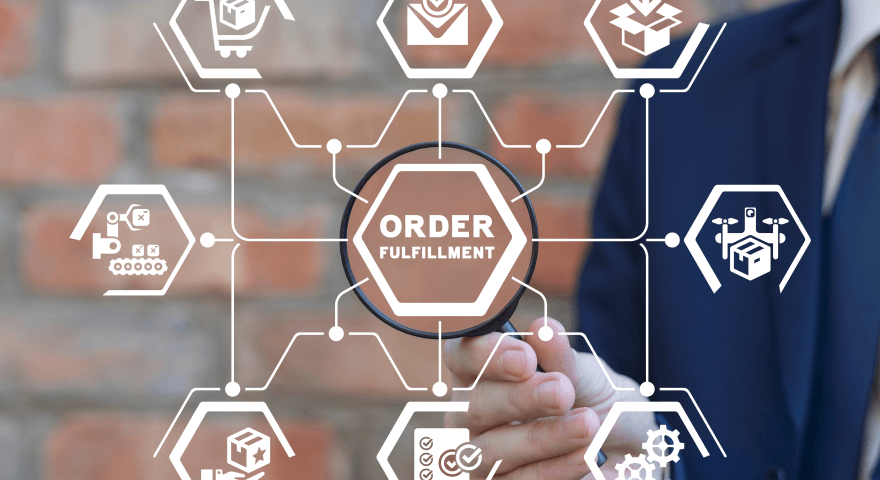Every organization has components, commodities, and even finished products on stock. With these, they ride waves of high demand or supplier constraints. Inventories such as these constitute a huge management task, with ambiguous variables and high stakes. In fact, the effort needed to succeed in managing inventory is often so high, so specialized, that many larger companies seek external help. This is where inventory optimization companies come in.
In this conversation, Dr. Kilger Kilger (CEO Services and Solutions) and Titus Lottig (Data Scientist) will explain the significance of inventory operations, as well as the processes of better management and how they work.
Dr. Kilger: Inventory management is an important topic today for many industries, mainly in consumer products and distribution-intensive industries like commodities, steel, chemicals, and so on. They play multiple roles in supply chains, acting as buffers against high demand or supply chain disruptions that may occur. Inventory means we can fulfill customer demand quite quickly – but this comes at the cost of reduced working capital, less cash flow, and additional cost for stockholding, amongst many other things.
There are multiple approaches to optimization, and it's also important to distinguish between consumption-based materials versus plan-based materials. In many supply chain settings, we also observe something like shortage gaming. If there is not enough, everybody claims they need more and so on, or the bullwhip effect – when upstream demand signals fluctuate tremendously.
At aioneers, we are working on advanced technology to optimize inventory management. So, Titus, could you give us a brief intro to that?
Titus Lottig: Well, we typically strive to model supply chains as reflections of how they are in the real world. We are not talking about single nodes where we want to optimize the stock. Rather, we look at whole supply chains, their networks – whether they are serial distribution networks, assembly, or just general mixes. It makes sense to optimize globally, not just locally. That’s why we are pursuing the multi-echelon inventory optimization approach.
So, we focus not just on minimizing inventories but on deciding where to keep stock, at what levels to keep stock, safety stocks, reorder points, and more. We will then work on optimizing this for the entirety of the network - not just the demand or production at one end - to help the supply chains with inventory.
Optimizing doesn’t just mean reduction. We typically optimize parameters for a certain model. Then, we simulate against historical data in order to enable the decision-makers (our clients), to make comparisons against longer periods. That way, they can see whether the policies are good enough and the parameters are stable.
Dr. Kilger: And through this, we learn how inventories go up and down in different situations and then see the resulting service levels.
Titus Lottig: Exactly, and it's not just about the cost. Usually, when we talk about optimizing a comprehensive objective function, it includes ordering costs, holding costs, capital employed, and also a service level penalty. Therefore, when we are not able to fulfill a certain customer order in the simulation, that will incur a penalty. We strive to minimize the subjective function. The supply chain is also modeled keeping in mind other restrictions like lead time restrictions, minimum ordered quantities, etc. to get to a good optimization approach.
Hence, it is an operations research accompanied by simulation, and end-to-end transparency. It is also enabled with our AIOinsights to see what the supply chain is about; looking at what the actual material flows are, and also segmenting the supply chain based on client data. Segmenting means actions like considering what could be decoupling points between different supply chains, because no single company has only one supply chain. It is always multiple, which should be kept in mind in the optimization approach. Of course, at some point, there are other aids you can use; you could feed in machine learning forecasting into the model, and you could achieve certain parameters using classification because you don't necessarily work at the level the client has in its transactional system.
Still, it often makes sense to aggregate on a different level like a product family, and this is also where we at aioneers are particularly flexible in building this into our model. So we are using our AIO intelligence workbench based on python, and therefore we are very flexible to model in the actual supply chain to aggregate it also to a level where it makes sense for us. Then you can't just take master data from the transactional system because when you are going for a product family for example, you wouldn't have a minimum order quantity there. Hence, you need to employ some classification to get to it.
Dr. Kilger: You also mentioned in many situations – complex supply chains, multiple chains, and networks – that it's important that customers also understand what's going on in the material flow. Thus visualization plays an important role both in the initial situation and in an improved situation where we could, for instance, indicate where the inventories will be reduced, or give the recommendation to rather build up stock.
Titus Lottig: You can identify where you should have a stocking point, which needs to be tailored precisely to the customer as each will require a certain lead time. You can only fulfill these demands when you are at the edge of your network. In other cases, if you have good lead times or if the customer doesn't require it that much, you can also stock it more upstream. You could pool your demand, making it easier to get to a good inventory policy and thus reduce the safety stock requirement.
Dr. Kilger: Because the amount signal will be more stable.
Titus Lottig: Yes, and you can push it upstream and even further upstream. Still, you have to simulate it to see if it makes sense, provide different scenarios, visualize it, and often analyse it on a map. Although the customer can directly see that perhaps a product will not go via a particular route in the supply chain, they can then see the supply chain optimization objective rather than the accounting view for which the transactional systems are made.
Dr. Kilger: When we look at this in context, we know our methods work. We have some great results with 15-20% inventory reductions in total for finished goods, a little less for raw materials, and, through those, we see improved service levels. Still, it involves a lot of different technologies. You mentioned Python for the actual control of the algorithm.
You have many libraries and you mentioned the machine learning visualization part, and we do need all the data extraction from transactional and planning systems and so on. So this is why I think – and I’d like to get your opinion on this – that is why it is difficult for many customers to do this on their own. They often go for a managed service such as what we offer at aioneers to provide this type of technology and maintenance over months.
Titus Lottig: Yes, it is for sure. First of all, you need to have all this tech stack available. Lots of the time, it could actually be in use at the client’s company but siloed in various places. You have different systems, and therefore, getting all the data, then modeling and visualizing it covers a huge spectrum of capabilities. Usually, you won't cover the entire spectrum, or have the resources available to exploit what you do have in the company itself. Therefore it makes sense to go with us as a managed service.
In the first phase, we will prove the value of ramping up inventory management. You will also see the benefit of entrusting certain tasks with some managed service providers. The process will look different depending on what you need from your supply chain. You’ll need to decide where you are more operational. For example, during monthly or even weekly runs or when it is more tactical, you’ll always need to calculate and optimize stock for the runs – some quarterly, some even twice a year. This capacity is specialized within a managed service, but is not usually found in any organization.
Dr. Kilger: Any inventory management project with us will also speed up time-to-value because we are up and running after a couple of weeks of getting the data. We can present the first results quite quickly. As soon as we have initial results and recommendations on reducing certain inventories, building up others, or relocating inventories in the network, this will also need to be executed. There we can bring in our AIOimpact execution platform.
Titus Lottig: Yes, exactly. So it has several dimensions. The first thing is that when we are fast and able to visualize it quickly, the customer can see what fits and does not fit, bringing value. But it's never the end. There are also improvements to be made. Certain things can be operationalized and directly implemented for the customer, for example, for optimizing some reorder points, you can directly get them back into your transactional system. You need to keep track as it is the entire supply chain, not just one stocking location that all of the different echelons and plans, for example, are following then your recommendation implementing and you want to have the overview. Therefore, your impact is great.
On the other hand, you are looking at the data for the first time and have the first results, but you also see the aspects that could be improved. Here we are deviating part, and then it's also continuous improvement working on this model. Therefore, IO impact helps a lot to drive these iterations forward. On the other hand, the reason why we are typically going into a managed service is that there are things that are changing as new products are coming. You want to add new parts of this multi-eclipse inventory optimization model step by step.
Dr. Kilger: To summarize, we could say it all starts with getting the data, visualizing it, and then setting up all the algorithms, all the machines we need to achieve optimization and simulate the results out of it. We get a lot of changes that need to be made in physical inventory and master data for improving the whole system, which we can then support through AIOimpact.
Titus Lottig: Yes, that is about right. In the beginning, we typically perform a segmentation for the project. Also, having the data ready and to visualize and segment it is just a by-product of this ramp-up – but it already provides a lot of added value.
Dr. Kilger: And in nearly every industry, it can be applied. So it is very easy to start. We can help with that, and it provides double digits improvements in inventory position while we also optimize the service level.
That’s that on multi-echelon inventory management! Why not book a demo to hear how we can help you?




.jpg)



.png)
